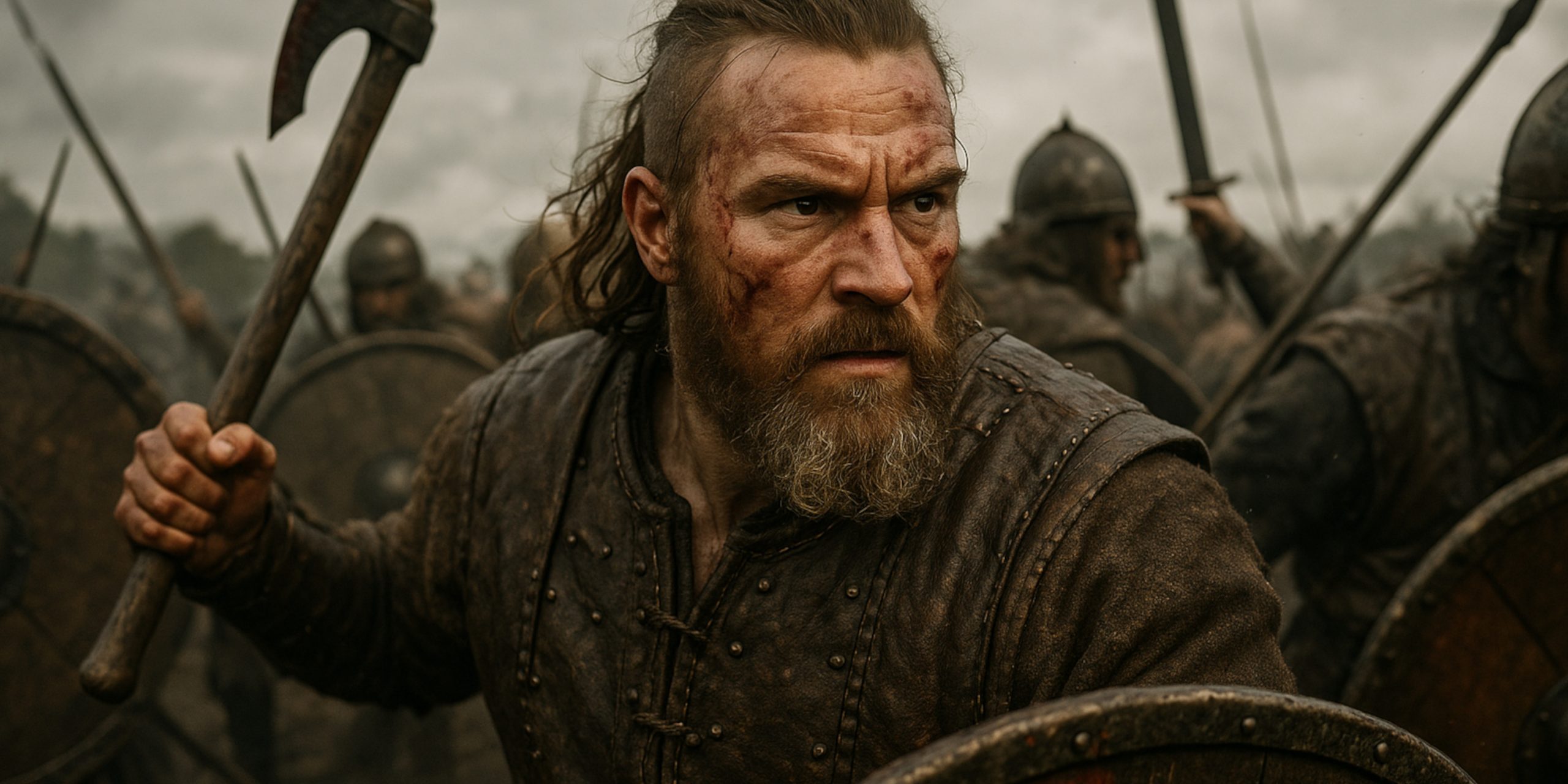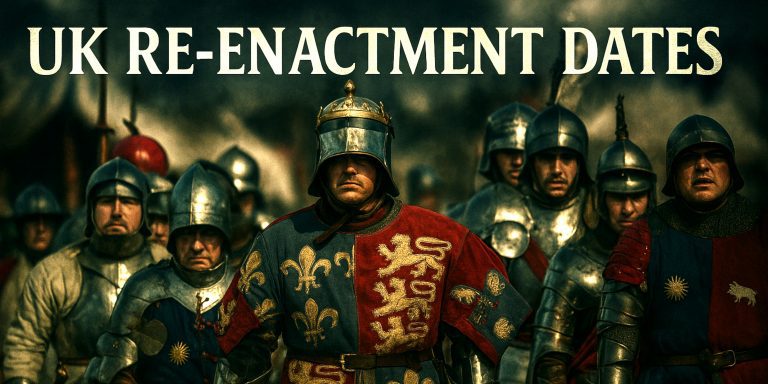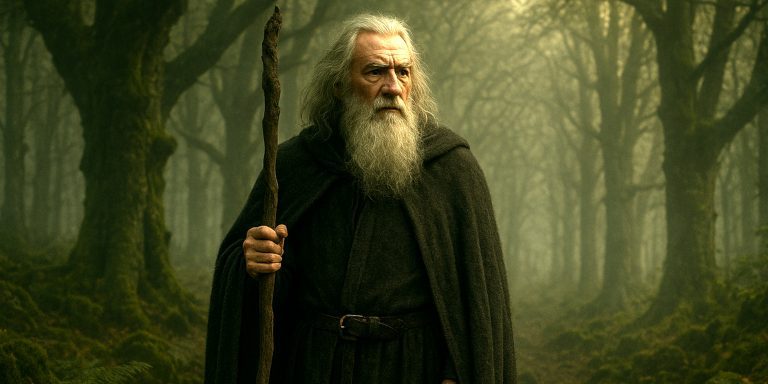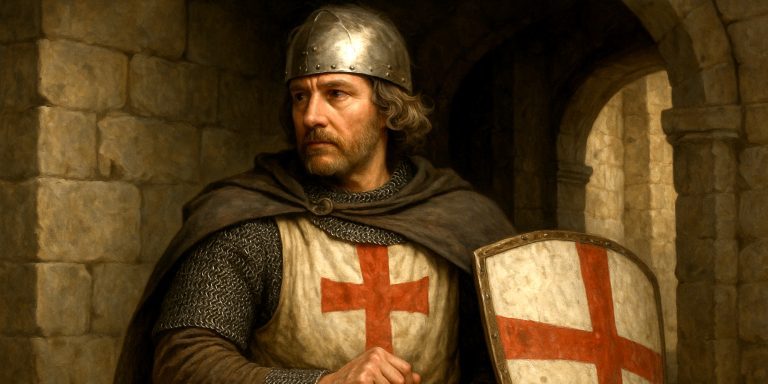
Halfdan Ragnarsson remains one of the most enigmatic yet consequential Viking leaders of the 9th century. As a reputed son of the legendary Ragnar Lothbrok, he emerged during the violent height of Norse incursions into Anglo-Saxon England and Ireland. Though myth and history intertwine in his legacy, the imprint he left on the political map of early medieval Britain is undeniable.
Arms and Armour
The precise weapons wielded by Halfdan are not documented in primary sources, but we can infer from his time and status what a war leader of his stature likely carried into battle.
Weapons:
- Viking Sword: Likely a high-status pattern-welded blade, broad and double-edged, typically housed in a richly decorated scabbard. The hilt would have featured iron or bronze fittings, sometimes inlaid with silver or copper.
- Spear: The most common Viking weapon. A leader like Halfdan would have carried both throwing spears and heavier thrusting varieties.
- Seax: A single-edged blade used for close combat and utility purposes.
- Axe: Possibly a bearded axe or Danish-style broad axe, especially in later campaigns.
Armour and Protection:
- Mail Shirt: Chainmail hauberks were expensive, but Halfdan would almost certainly have worn one, possibly with added leather reinforcement.
- Helmet: A conical iron helmet with a simple nose guard. Contrary to popular imagery, there is no evidence for horned helmets.
- Shield: Round, wooden, often with an iron boss and painted surface. Leaders sometimes had reinforced shields with decorative designs to denote rank.
Battles and Campaigns
Halfdan’s military career spanned multiple kingdoms and several decades, with operations ranging from brutal raids to outright occupation and kingship.
The Great Heathen Army (865–878):
Halfdan was a leading commander of the Great Heathen Army that invaded Anglo-Saxon England. It was a force more organised and sustained than earlier Viking raids, aiming not just to plunder but to conquer and settle.
- Capture of York (866): After the death of Ælla of Northumbria, reputedly at the hands of Halfdan and his brothers, the army seized York. Halfdan established dominance over Northumbria and later declared himself king.
- Siege of Nottingham (868): The army wintered in Nottingham, facing opposition from Mercian and Wessex forces led by King Alfred. Though battle was avoided, it strengthened Viking influence in the region.
- Battle of Repton (873–874): A significant campaign where the Viking army overwhelmed Mercian resistance and forced King Burgred into exile.
Conquest and Kingship of Northumbria:
In 875, Halfdan is recorded as settling his men on land in Northumbria, transitioning from raider to ruler. He was likely instrumental in the founding of Norse-ruled York (Jorvik) as a political centre.
Campaigns in Ireland:
By 877, Halfdan had turned his attention to Dublin, perhaps seeking to reclaim control from rival Norse factions. However, his ambitions ended with his death in battle.
- Battle of Strangford Lough (877): Fought in Ireland against a rival Norse faction known as the ‘Fair Heathens’. Halfdan was killed, marking the end of his known activities.
Military Genius
Halfdan’s leadership reflected both strategic and political acumen. His ability to transition from raiding to governance set him apart from other Viking warlords of the time. He maintained cohesion within the Great Heathen Army through a mix of plunder, religious symbolism (possibly invoking Odin in battle), and pragmatic alliances with rival Anglo-Saxon rulers.
His approach to warfare was methodical. Rather than simply looting and retreating, he pursued campaigns that subdued enemy leadership and redistributed land. The settlement of his troops in Northumbria, for instance, was a calculated move to solidify Norse presence and economic stability.
Where to See Artifacts from His Reign
While no definitive personal items of Halfdan Ragnarsson survive, several museums hold material linked to the Viking Age in Britain, especially from the regions where he operated.
- Yorkshire Museum (York): Houses numerous artefacts from Jorvik, including weapons, jewellery, and everyday items from Norse settlements.
- British Museum (London): Features the Vale of York hoard and weaponry from the 9th to 10th centuries, offering a glimpse into the wealth and arms of Viking elites.
- Dublinia & National Museum of Ireland (Dublin): Displays items from the Norse period in Ireland, including sword pommels, axes, and burial relics potentially linked to battles like Strangford Lough.
Latest Archaeological Findings
- Pagan burial at Repton (Derbyshire): Excavations have revealed a mass grave of Viking warriors dated to the wintering of the Great Heathen Army in 873–874. Isotope analysis shows a Scandinavian origin for most of the individuals. Some historians speculate that this may relate to Halfdan’s leadership, though his own remains are unconfirmed.
- Jorvik Settlement Layers (York): Ongoing digs continue to reveal complex urban planning, trade networks, and Norse domestic life under Halfdan’s likely governance.
- Strangford Lough Finds (County Down): Although less well publicised, sporadic discoveries of Norse-era items in this region suggest continued Norse-Irish conflict and could be linked to Halfdan’s final campaign.
Legacy
Halfdan Ragnarsson occupies a grey area between myth and documented history. While his familial connection to Ragnar Lothbrok may stem from saga embellishment, his actions are firmly planted in the record. He helped transform Viking activity in Britain from chaotic raiding into political control and settlement. His influence shaped the early foundation of what would become the Danelaw.
In military terms, he operated with a rare blend of brutality and political foresight, carving out territory while paving the way for Norse integration into the English landscape. His death in Ireland closed a significant chapter in Viking dominance, but his legacy would ripple through the generations that followed.



